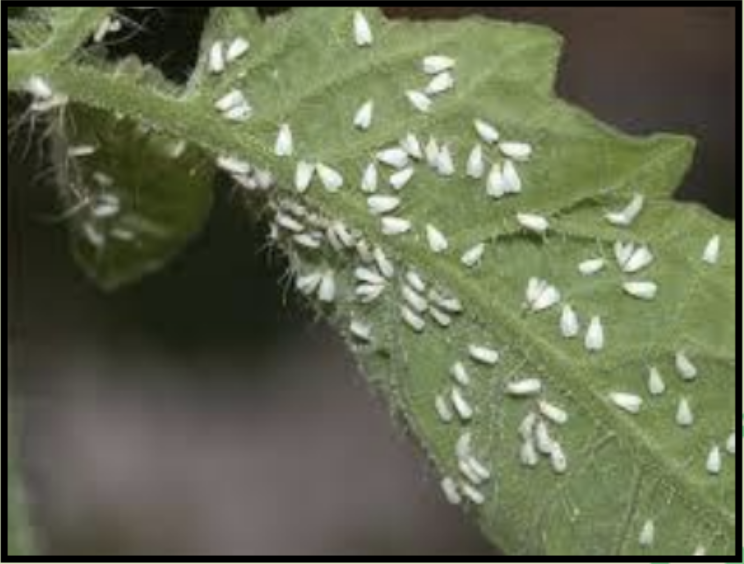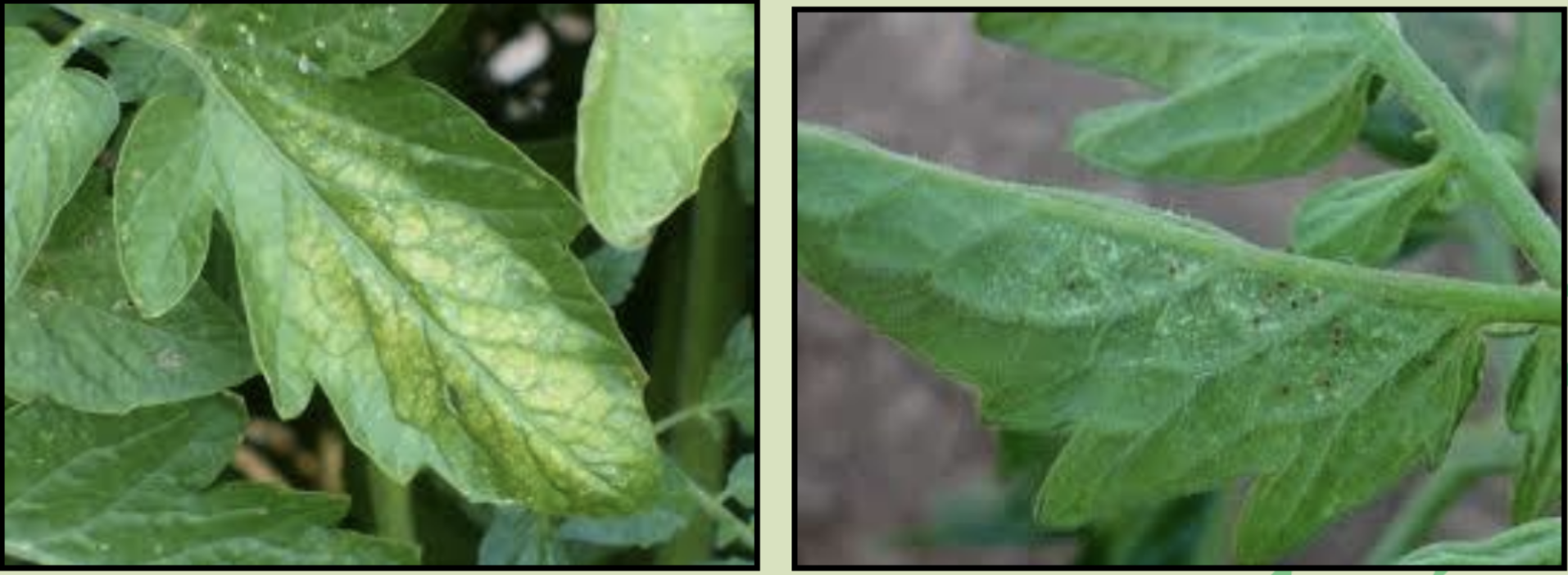PESTS
Root knot nematodes
These are galls and swellings on the roots causing stunting of the plants and eventual death.
Control: Good agricultural practices and chemical controls are used. Planting nematode free seedling through application of Nematicides
Tobacco whitefly
Whiteflies are tiny, soft-bodied insects. They are not true flies. They secrete a white waxy substance through special glands on their abdomen. The adults coat their bodies, particularly their wings, with this wax, hence the name “whiteflies.” In their immature stages (nymphs) they also secrete wax in various forms.
Damage caused by whiteflies
Like aphids, whiteflies have piercing-sucking mouthparts so the damage caused is very similar to that of aphids. Damage to the crop is usually caused by larvae and adult insects that suck the leaf tissue and young fruit secreting sticky undigested sap (honeydew) during feeding. It is documented that about 2,000 nymphs can be found on a single leaf; each nymph is capable of producing 20 drops of honey dew in an hour! Sooty moulds grow on the sugary secretions (Cladosporium spp.) hence reducing the photosynthesis area of the leaves and resulting in stunted growth and poor quality produce. Heavy infestations cause decline of plant vigor. Stunting, yellowing of foliage and premature leaf drop are among the symptoms of injury.
Feeding by whiteflies can also cause deformed fruit and discoloration of your tomatoes.
Whitefly adults can also transmit several viruses from diseased to healthy plants including the destructive Tomato Yellow Leaf Curl Virus (TYLCV). If your plant gets infected with a virus, pull it out.
Monitoring
Check the undersides of leaves regularly with a hand lens to monitor for both adults and nymphs. Look for flying whiteflies regularly by knocking tomato leaves. This is an easy way to monitor adult activity and abundance because they are easily disturbed and will flutter away. Monitoring your populations, especially during hot dry weather will help you decide if or how to manage whitefly problems. Generally, tomatoes (and other plants) can tolerate some whiteflies (up to 10-25 nymphs per leaf) but population explosions (50 and up nymphs per leaf ) can quickly rob you of your tomatoes.
Whitefly Control
Because of the large number of eggs laid by an adult whitefly their population can multiply quickly within a short period of time. Adults mate within 10 to 20 hours of hatching and live between two and three weeks. Control is complicated by the nature of the eggs and the pupae which cannot be killed by contact insecticides as they are covered by waxy substance.
To control whiteflies:
• Use varieties tolerant or resistant to viruses.
• Remove Solanaceous plants and weeds which are in the vicinity of the tomato crop.
• Rogue diseased plants and destroy by burning. Ploughing infested crop at night and weed management can help to bring the population below threshold levels.
• Use of oil sprays (DC-tron) helps discourage spread of whiteflies.
• Practice a good crop rotation program.
• A maize crop “guard row” can be planted around the tomato field to reduce the ability of whiteflies to reach the crop.
• Adult whiteflies can be controlled by overhead irrigation with soapy water (sodium based soaps).
• At larval stages system growth regulators such Applaud (buprofezin) can be used.
• Biological control options.
• Perhaps the most common is the use of whiteflies natural predator Encarsia formosa. This parasitic wasp attacks the whitefly by depositing an egg within the host body then, after about 10 days, the parasitized host will turn brown as wasp pupation occurs. After another 10 days the emerging adult wasp will appear and will, in turn, parasitize more whiteflies and Entomopathogenic fungi such as Beuaveria bassiana and Verticillium lecanii.
• Effective insecticides for control of whiteflies include Pyrethroids and other contact insecticides. Imidacloprid, Azadirachtin, Dimethoate, Lambda-Cyhalothrin, Deltamethrin, Acephate, Pyrethrin and Thiacloprid among others. Farmers MUST adhere to the recommendations on the product label and observe the Pre-Harvest Intervals as advised on the product label.
Red spider mites
The minute, spider like animals are visible by the naked eye and feed on sap from the underside of the leaves. They cause speckling and tarnishing of the leaves turning yellowish to whitish. The pest has wide host range including wild, e.g., sodom apple and cultivated plants such as cassava, maize.
American boll worm (Heliothes armigera)
The caterpillars bore into fruit and feed on the inner pulp of the fruit releasing plenty of excreta which is noticeable.
Tuta absoluta
Hornworm
Hornworms are the larval stage (caterpillars) of sphinx moths. They are called hornworms because of the tell-tale horn or spike on their tail end (top image). These caterpillars have voracious appetites and can consume entire leaves and small stems in a short time. Hornworm damage is obvious when the infestation is moderate to heavy because of the large amount of defoliation. Search for the large caterpillars and the large, black droppings on the leaves or ground beneath the plant.
Hornworms that are not feeding should be left on the tomato plant. They may have been infected with Bt, an organic pesticide that only attacks caterpillars, or they may have been parasitized (bottom image). The tiny white cocoons sprouting from the hornworm are the pupal cases of tiny wasps that have eaten the hornworm from the inside out. If left alone, the adults will emerge and fly off in search of other caterpillars to parasitize and kill.
SOME COMMON PESTS AND DISEASES IN TOMATOES







